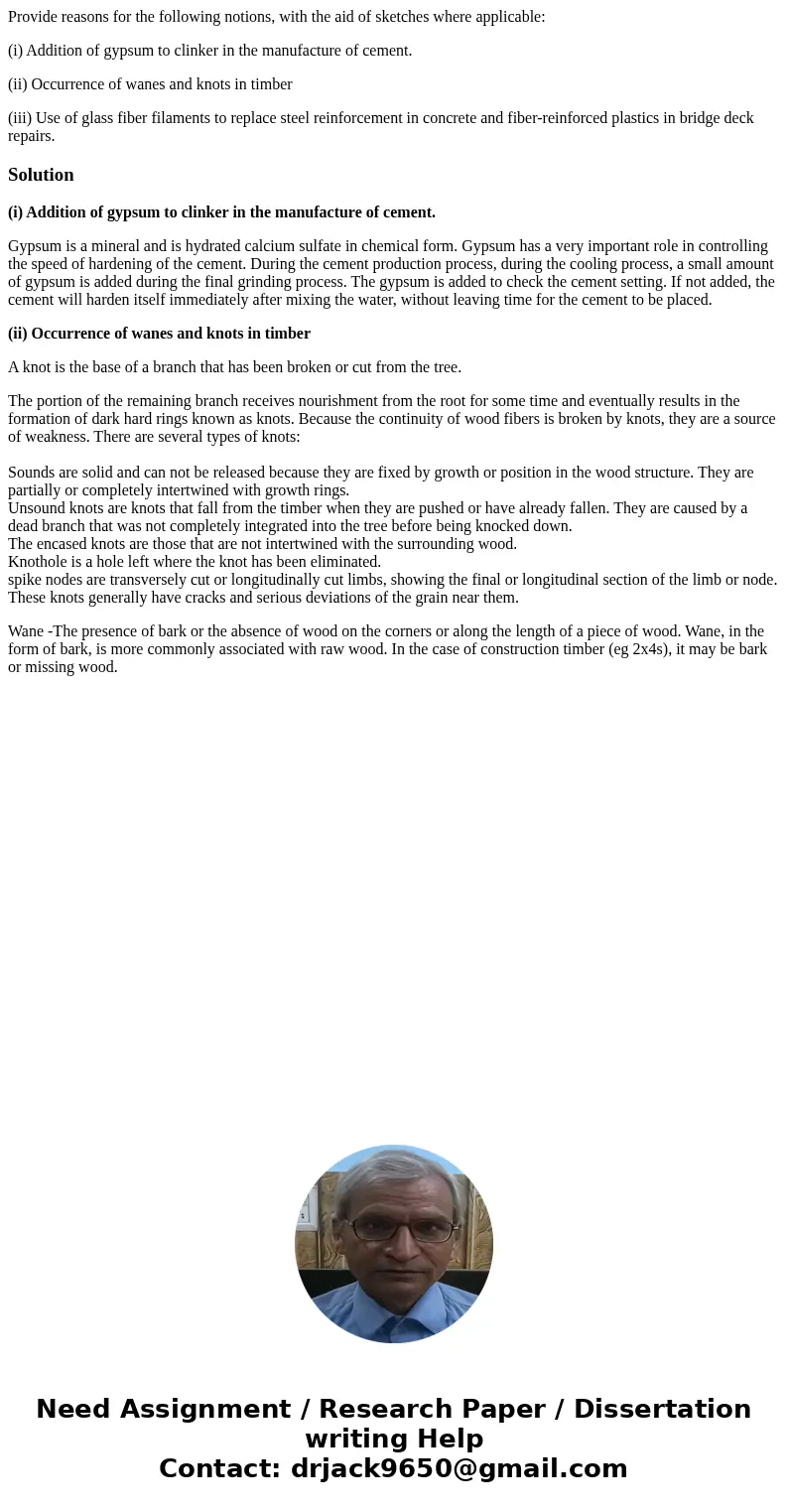Provide reasons for the following notions with the aid of sk
Provide reasons for the following notions, with the aid of sketches where applicable:
(i) Addition of gypsum to clinker in the manufacture of cement.
(ii) Occurrence of wanes and knots in timber
(iii) Use of glass fiber filaments to replace steel reinforcement in concrete and fiber-reinforced plastics in bridge deck repairs.
Solution
(i) Addition of gypsum to clinker in the manufacture of cement.
Gypsum is a mineral and is hydrated calcium sulfate in chemical form. Gypsum has a very important role in controlling the speed of hardening of the cement. During the cement production process, during the cooling process, a small amount of gypsum is added during the final grinding process. The gypsum is added to check the cement setting. If not added, the cement will harden itself immediately after mixing the water, without leaving time for the cement to be placed.
(ii) Occurrence of wanes and knots in timber
A knot is the base of a branch that has been broken or cut from the tree.
The portion of the remaining branch receives nourishment from the root for some time and eventually results in the formation of dark hard rings known as knots. Because the continuity of wood fibers is broken by knots, they are a source of weakness. There are several types of knots:
Sounds are solid and can not be released because they are fixed by growth or position in the wood structure. They are partially or completely intertwined with growth rings.
Unsound knots are knots that fall from the timber when they are pushed or have already fallen. They are caused by a dead branch that was not completely integrated into the tree before being knocked down.
The encased knots are those that are not intertwined with the surrounding wood.
Knothole is a hole left where the knot has been eliminated.
spike nodes are transversely cut or longitudinally cut limbs, showing the final or longitudinal section of the limb or node. These knots generally have cracks and serious deviations of the grain near them.
Wane -The presence of bark or the absence of wood on the corners or along the length of a piece of wood. Wane, in the form of bark, is more commonly associated with raw wood. In the case of construction timber (eg 2x4s), it may be bark or missing wood.

 Homework Sourse
Homework Sourse